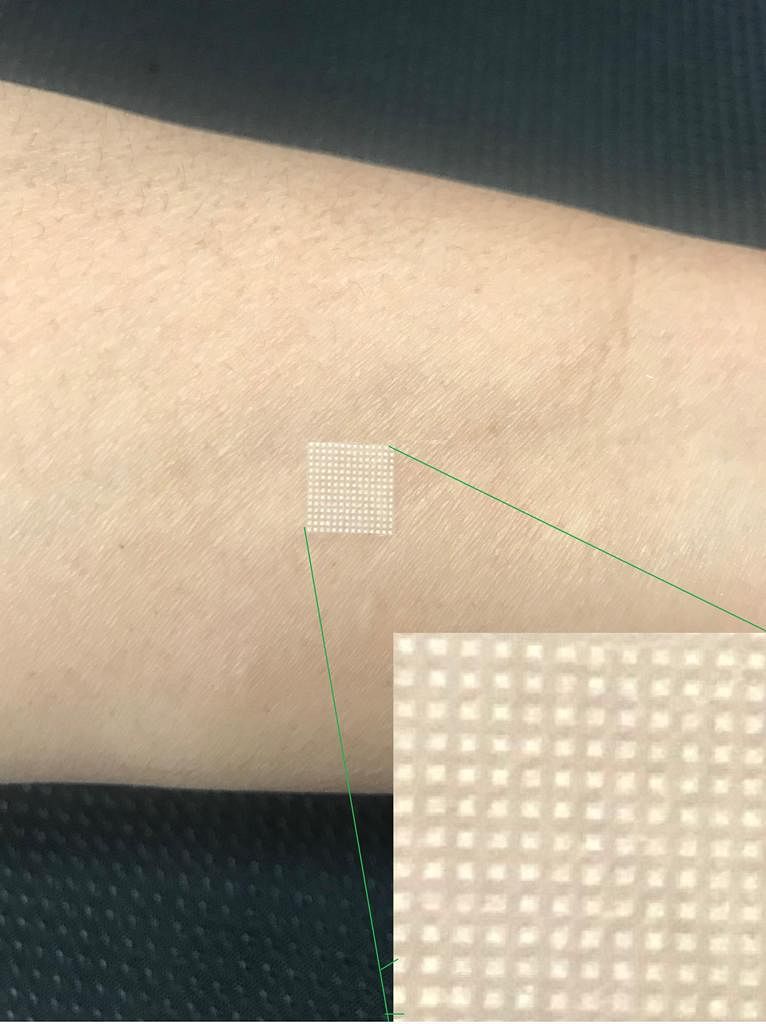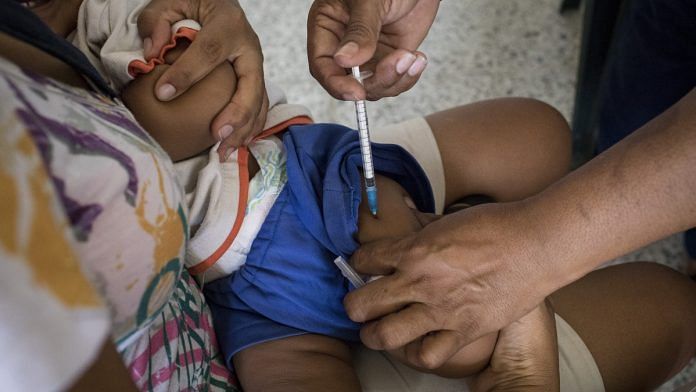The adhesive bandage-like patches can deliver the full dosage of 0.5 ml in one go, and will be locally sourced to keep costs in check.
New Delhi: Vaccines around the world are currently available only in injectable form, and scientists are scrambling to come up with less painful adhesive bandage-like patches. Indian researchers are also on the same path, but their product promises to be a lot more India-friendly, and could be available in as little as one or two years.
These microarray patches (MAPs) — consisting of an array of small needles attached to the skin for a certain period of time —will allow the vaccine to enter the body and work like any traditional injectable, minus the pain.
If proven successful, the technology would be beneficial for India’s rural public, as it can be administered by health workers and volunteers with minimal training, or even self-administered. It also promises to be quite cheap, in keeping with India’s needs.

Current status
Medical journal Lancet reported that in the West, the first phase of trials on humans have been concluded, and were “largely safe”. In India, meanwhile, Hilleman Laboratories, a Delhi-based not-for-profit vaccine research organisation, is about to begin its human trials.
“We are in the process of concluding the final stage studies of testing the patch device on animals. After reading through the data derived from animal studies, we will move to human-based clinical trials,” Davinder Gill, chief executive officer of Hilleman Laboratories, told ThePrint. “The product is likely to be out in another one to two years.”
The patch being developed by Hilleman differs from the Western version on two key parameters. First, it can administer 0.5 ml of vaccine (the standard dosage) as against 0.1 ml in the Western patch.
“We have discovered a technology which would allow us to administer doses up to 0.5 ml,” said Gill.
Moreover, the company is trying to leverage the low input cost in India to produce the world’s cheapest microarray patch. “We are working with local component makers. In India, we will be able to make the product for one third or one-fourth of their cost in the West, per unit,” he said.
Hilleman, a joint-venture between American pharma major Merck and British charitable Wellcome Trust, is known for its cholera vaccine, and plans to scale the commercial production of the MAP after clearing human trials.
“The product will also be usable for non-vaccine applications such as for administering contraceptives,” Gill said.
Asked about the distribution plan, Gill said Hilleman will put it out through all the channels where vaccines are currently available, government and private.
Also read: New flu shot far more powerful than the 1940s breakthrough in preventing flu-like illnesses
Possible game-changer
According to the World Health Organisation, MAPs have the potential to become a game-changer in the arena of immunisation, especially in low and middle-income countries.
“MAPs have emerged as offering clear advantages for vaccine delivery including increased thermostability, reduced packaging volume, ease of delivery, safer administration, and disposal,” WHO had said.
The patches could help increase the coverage of vaccination programs in rural areas where doctor shortages are at their peak. The technology would provide an attractive platform during epidemic outbreaks or public emergencies, as these patches could be delivered to intended recipients with minimal supervision.
Also, a less painful vaccine may help young children and people who suffer a fear of needles or of sharp or pointed objects.
Status of immunisation in India
The vaccination programme faces multiple challenges in India, ranging from low coverage rate, the limited number of vaccinations available, and issues due to quality and logistics.
India has the largest burden of under-five mortality, as per government statistics. Almost 39 children less than five years old die for every 1,000 live births each year. Pneumonia and diarrhoea are the leading killers. Nearly 0.1 million children die due to rotavirus-induced diarrhoea, which is around 50 per cent of all deaths attributed to diarrhoea.
However, India aims to immunise 90 per cent of all pregnant women and children by 2020. As per the National Family Health Survey, in 2015-16 the immunisation rate stood at 62 per cent.
Also read: Who will be the next king of vaccines — India or China?






